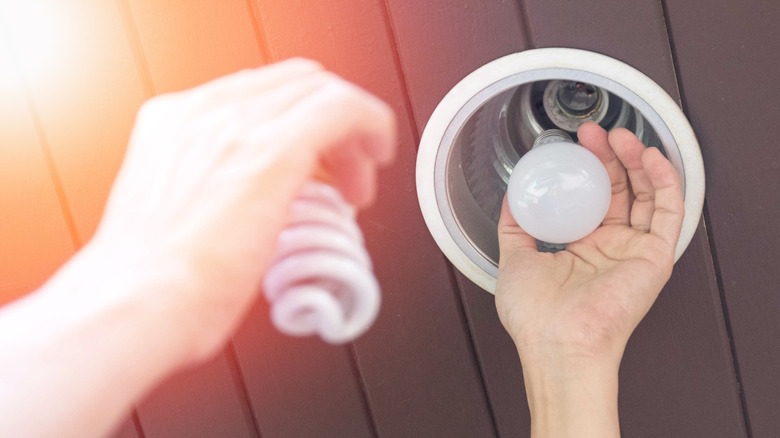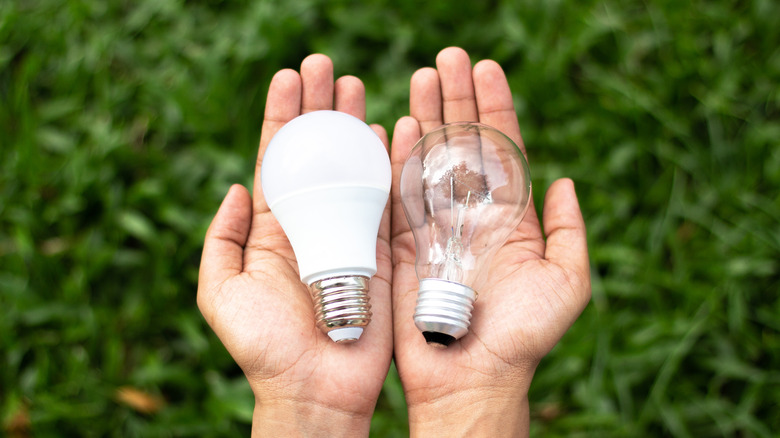The Real Reason LEDs Are Better Than Regular Light Bulbs
Incandescent light bulbs have lit the way for longer than a century (Thanks, Thomas Edison!) but they may have finally met their match. In recent years, LEDs (or light emitting diodes) have become front and center in most commercial stores and homes when it comes to lighting.
LEDs are essentially semiconductors that allow electricity to flow through, producing light. The best part? They produce incredible color (and not just the typical yellow or white), and are often used in modern smart lights, making them effortless to use straight from your phone. Regular light bulbs, however, use heat to generate a light bright enough to shine from a wire filament to the exterior glass bulb. Incandescent bulbs are super common and are probably sitting in the lamp closest to you as we speak. They're well-known for their low price and adaptability, no matter the kind of power you're working with (via Stouch Lighting). And yet, LEDs — which are priced significantly higher than their traditional lighting counterparts, as noted by Stouch — seem to be growing in popularity.
While the ambiance of a dimly lit movie room or a sleek gaming setup with green and blue lighting accents is reason enough to make the switch, there's one glaring reason beyond color as to why LEDs lead the lighting game.
LED lighting means more monthly savings
Despite the fact that LED lights cost about 14x more than a traditional incandescent bulb to buy, it's an investment you'll want to make. Inspire Clean Energy explained that despite this drastic price hike between the two options, LEDs actually end up costing you much less in the long run (and that's even if your kids are constantly leaving all of the lights on).
Another major benefit to LEDs is the fact that while they do produce heat, they absorb a whole lot less energy than regular lightbulbs. They are more energy efficient, which has a positive impact on both you and the environment. That means less risk for fire hazards, and more money saved, since the impact on your electricity bill will be noticeable (in a good way — we promise). In comparison to a 60 watt traditional bulb, a 12 watt LED can save up to 80% of energy. Depending on use, a single LED bulb costs just $1.00 per year, whereas an incandescent bulb might run you closer to $4.80 annually (via Energy Saver). And according to Inspire Clean Energy, LEDs last for nearly 50,000 hours on average. A regular bulb will only get you about 1,000 hours of use — if you have to replace it 50 times, then the cheaper price of a regular bulb sounds a whole lot less appealing.
Now that you understand why LEDs are better than regular lightbulbs, you may want to make changes in your home!

